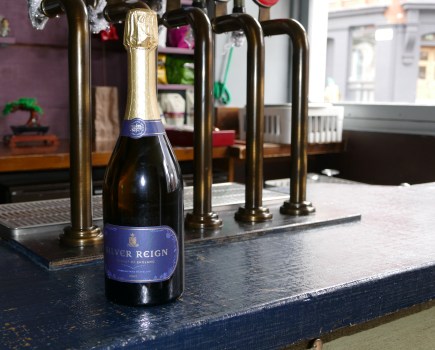While a unique story, strong social media presence and an active PR strategy can put your brand in front of many, labels make sure your wine stands out on a busy retailer’s shelf.
From eye-catching designs, to a premium material finish, to the words used to tell your story, packaging can be make or break when consumers are faced with a wall of options.
So how do you ensure that your label best reflects your estate and conveys the quality product inside the bottle? Vineyard caught up with label veterans Paul Piper and Michelle Blee from Multi-Color Corporation to find out the key elements of leading labels.
Form a team
So, you’ve chosen your designer and initial concepts are being fleshed out, but who is going to ensure your crest is gold incrusted, your emblem embossed and your tactile touchable? Now is the time to find your printer; the people who are going to bring your design to life.
“By getting involved with designers from an early stage we can make sure everyone gets what they want and understands what the final outcome will be,” said Paul Piper at MCC.
Don’t fall flat
Today’s printing technology means that labels are no longer confined to 2D. Creating a layered design can help bring your brand to life but with so many different types of tactile, embossing, foiling and high build screen printing, deciding what will work for your design can be difficult.
“An exceptional design with a flat print can lose its impact without the multi-dimensional effect,” said Paul. “We advise on the best print techniques for customer’s designs to give the best results on shelf. An emboss will look good on certain materials, or a high build screen can be used so text or images are glossy but also feel raised.”
Magic material
The range of waterproof materials developed over the last few years has changed the game when it comes to ensuring that labels are ‘ice bucket proof’. From tasting events, to restaurant tables, there will come a time where your label is going to be immersed in icy water and the material needs to stand up.
“We work closely with paper manufactures to ensure there is a good supply of materials which vary in texture but are suitable for spending hours in ice buckets,” said Paul. “We deal with a lot of wine producers and understand which materials to use.”
Don’t wing it
Depending on the material, neck label designs will often need tweaking to prevent them from winging. Thick materials around a tight curve can often pull away, not stick properly or distort designs.
“We can simulate the main material paper or add special ink effects to some areas to allow for more adhesive,” said Paul. “We will also adjust the cutter so that the neck label fits properly to the bottle.”
Accurate application
Whether by hand or machine your printers will need to know how the labels are being applied. Bottling machines differ in specification and you will need to ensure that labels run at a good speed, with no issues when it comes to the final application.
“Customers who are having their wines contract bottled don’t always know the machine specifications,” said Michelle Blee. “If we have worked with the bottlers before we will know how their machinery handles our labels. We never leave anything to chance so if it is a new bottler, a difficult cutter shape, or a material we haven’t worked with before we will do trial runs.”
Nothing is impossible
Innovation is often born out of ideas previously believed to be impossible. If you and your designer have developed a concept not before seen in the label world, there is a solution.
“The MCC group has been around since 1916 so even if we haven’t seen something before someone in the group will have done,” said Paul. “If there were elements of the design which could not be produced in a ‘conventional’ way we would always try new approaches to make sure the client gets the look they want.”
Premium product; premium label
As English and Welsh producers continue to bring quality wines to the market labels need to effectively convey what’s inside.
“The trend in English wine labels, particularly with sparkling, is to have a high-quality material with attention to the finer details like embellishments and gold foils,” said Michelle. “Brand owners looking for that premium feel often want to invest more in the label to ensure the right message is expressed to the consumer.”
Start sampling
If you are looking to start a new label design, a sample book will give you an idea of what is possible and what else is on the market. Taking designs from early conception through to final print can take months and the more time you have to explore the options the better.
“By sending out our brochure to both brand owner and designer they can flag up which labels they like the style of and the type of material, so we can run through the choices,” said Michelle. “The earlier we can get involved in the process the better as it gives us time to advise on the multitude of printing possibilities.”




